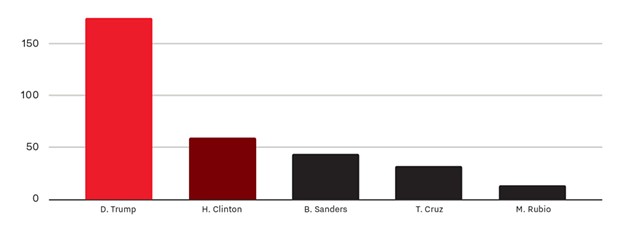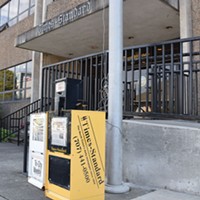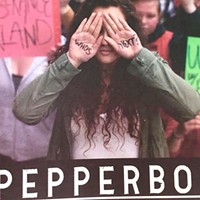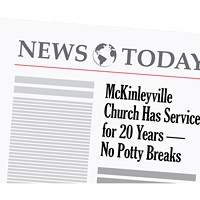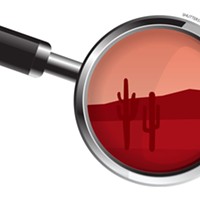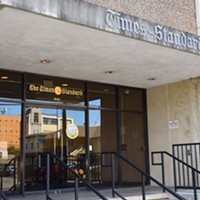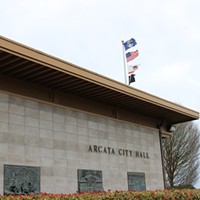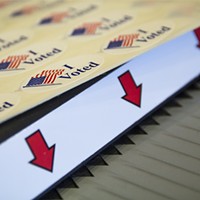[
{
"name": "Top Stories Video Pair",
"insertPoint": "15",
"component": "17087298",
"parentWrapperClass": "fdn-ads-inline-content-block",
"requiredCountToDisplay": "1"
}
]
Welcome to the invisible primary, the season leading up to official primaries and caucuses, in which candidates fight for media attention and pundits stupify the campaign into a horse race, dissecting who is "most likely to win" rather than reporting on political platforms. Four years ago, the television news media gave Donald Trump an inordinate amount of airtime, especially considering he was, at the time, a long-shot candidate with low poll numbers. But with his outlandish and outrageous sound bites, Trump earned unfettered access to the microphone. Other candidates outspent him in political advertising but Trump got more free press. Let's hope the news media does better this time.
The 2020 presidential campaign is in full swing. More than 14 million people tuned into the last televised Democratic debate in Houston, Texas, according to ABC News. Ten candidates were on stage but 10 others were not invited because they did not meet the Democratic National Committee's qualifications to appear. How can they win supporters if they can't get on TV?
According to a 2016 Harvard study, the most important indicator of a candidate's success is media exposure. The report by Harvard's Shorenstein Center on Media, Politics and Public Policy found that it is difficult for a candidate to raise money, win endorsements or secure a spot in the debates without media coverage during the "invisible primary." And that time is now. As we winnow and sift candidates through the unofficial primary season, the candidates we see in the debates increasingly matter the most.
Who's Counting?
Tyndall Report keeps track of how many minutes a presidential candidate appears on TV. Each night, Andrew Tyndall records the weekday nightly newscasts on ABC, NBC and CBS and then counts the minutes that each candidate is mentioned in a story or appears in a sound bite. In the last election, Trump received significantly more airtime than any other candidate. According to Tyndall's data from January to March of 2016, Trump received 175 minutes of news coverage, Hillary Clinton got 60 minutes, Bernie Sanders got 44, Ted Cruz got 32 minutes and Marco Rubio received 14. After the conventions, Tyndall shows that Trump was in the news 1,140 minutes, more than twice the air time Clinton received.
Why Trump got the most news coverage
In the fall of 2015, Fox News gave Trump unprecedented access to the microphone and CNN took note of Fox's ratings bumps when the outrageous talker was on the air. In a January 2016 morning meeting of network producers, CNN President Jeff Zucker directed his minions to cover Trump's every move, further boosting Trump's publicity beyond that of any other candidate. We can't credit Zucker alone for Trump's rise in the polls and eventual victory. After all, Trump's tough-guy, unpredictable sound bites made for great television. Zucker had no control over what other networks were doing but the pack mentality spread.
Print press helped Trump, too
The print news media are well aware of their impact on the last presidential race. In March of 2016, New York Times columnist Nicholas Kristof wrote that the newspaper helped Trump get elected. "We in the news media gave Trump $1.9 billion in free publicity in this presidential cycle," Kristof wrote. "That's 190 times as much as he paid for in advertising, and it's far more than any other candidate received."
Apparently, the more a candidate appears in the newspaper, the higher their poll ratings. Nate Silver, author of The Signal and the Noise: Why So Many Predictions Fail But Some Don't, counts the number of articles written about each candidate from July to December in the year before the primaries. In 2015, Silver found that Trump received 54 percent of newspaper coverage among Republican candidates, about six times more than his top rival Jeb Bush. On the Democratic side, Hillary Clinton was mentioned in 77 percent of the newspaper stories compared to 20 percent for Bernie Sanders. Silver found that the more newspaper coverage Trump got, the higher his standing rose in the polls. (One wonders how this may play out this year, with the House having begun its impeachment inquiry.)
Neither Silver's study nor the Tyndall Report are scientific. They can't indicate causality. Still, it seems clear media attention influences election outcomes.
If you don't think so, try your own non-scientific poll. In September, 10 Democratic presidential candidates appeared in the live debate on ABC News from Houston, Texas. Can you name all 10 who appeared? Can you name the 10 others who were not invited? Without media coverage of the candidates, we are less likely to know who they are.
Media and Public Responsibility
The next Democratic debate is Oct. 15 in Westerville, Ohio. Reporters from CNN and The New York Times will be asking the questions to at least 11 candidates, who have qualified to appear. Something should be done to even the playing field for all the candidates, not just the top 10. Let's consider some alternatives.
What if CNN and The New York Times challenge the Democratic party's system of selecting candidates for the televised debates and instead invited all candidates on the stage at the same time. They could extend the debate by an hour or so. For those who can't stay up that late, they could watch a replay another time.
What if the news media went on a Trump diet and avoided retweeting his daily schoolyard bully insults? How about giving all the candidates (yes, even Republicans) as much airtime as they give Trump?
In the meantime, how can voters increase their understanding of the candidates who get little or no press coverage? First of all, we can seek out sources of information outside of the mainstream media. We can follow the candidates on their own social media sites. But we also need to get context on the candidates and their issues. For that, we'll need credible journalists who can provide perspective. Try adding a Google alert to your email with the full names of the presidential candidates. This will send news stories from a variety of diverse sources directly to your inbox. It's not easy being an educated member of the public. But we all have the responsibility to try.
Vicky Sama is a professor of journalism and the chair of the Journalism and Mass Communication Department at Humboldt State University. Sama, a former CNN journalist, is dissatisfied with the use of non-gendered plural pronouns and teaches media law, ethics, and video and magazine production.
Speaking of...
Latest in News
Readers also liked…
-
Through Mark Larson's Lens
A local photographer's favorite images of 2022 in Humboldt
- Jan 5, 2023
-
'To Celebrate Our Sovereignty'
Yurok Tribe to host gathering honoring 'ultimate river warrior' on the anniversary of the U.S. Supreme Court ruling that changed everything
- Jun 8, 2023
